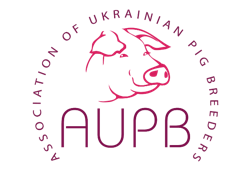After the official meetings in Washington, the team of Ukrainian pork producers continued the program in Iowa, which ranks first in the United States in terms of pork, red meat and egg production, corn production and ethanol production. Iowa is home to nearly 24 million pigs, which equates to 7.5 pigs per capita. Every fifth Iowan works in agriculture. In total, there are almost 85 thousand farmers in Iowa.
«The number of livestock in the state has not changed over the past few years: feed raw materials are expensive, construction costs are high, and business margins are moderate, which does not encourage producers to invest in new farms. At the same time, the state supports the development of the agricultural sector, including pig production, by reducing taxes and reducing the cost of loans — at 2−2.5% compared to the typical rate of 4.5%,» commented Iowa Secretary of Agriculture Mike Naig during the meeting.
Pig production allows you to make money, said the owners of NexGen, an enterprise that cultivates 200 hectares and has two feedlots for 2400 heads each. «We built the first site in 2006. Then we took a loan of 600 thousand dollars. We were able to return it to the bank in 12 years. We immediately began construction of the next fattening facility. Today we are planning the third one. There are producers in Iowa who have up to forty such sites because it is profitable. For example, two feedlots, one of which is on credit, earn about 100 thousand dollars per year.»
NexGen raises pigs under contract from weaning (21−24 days old, weighing about 6 kg) to slaughter. It receives a payment of USD 43 per year per sow, paid in equal monthly installments. Of this, approximately $ 12 is spent on utilities. He spends about $ 12 of that on utilities (water, electricity, propane, etc.) and maintaining the premises. Another $ 15 is spent on salaries. If there is no loan, the rest is the company's profit.
«The main advantage of the contract model is stable payments, regardless of the market situation. The fattener does not own the pigs, which means that his profit does not depend on price trends. On the other hand, he saves a lot of money — in 2021, the savings amounted to about 14 thousand dollars. USD per 2400-head fattener due to the introduction of manure into the soil and, accordingly, a reduction in the purchase of mineral fertilizers,» NexGen said.

USAID's agricultural development program (AGRO) aims to promote inclusive and sustainable economic growth through agricultural development in Ukraine.
The Association of Ukrainian Pig Breeders (AUPB) is a non-profit, voluntary organization founded by domestic pork producers. The main goals of the association are to represent and protect the rights and interests of the association's farms, promote the development and implementation of new technologies for efficient pork production, expand sales markets, and protect the domestic market.





